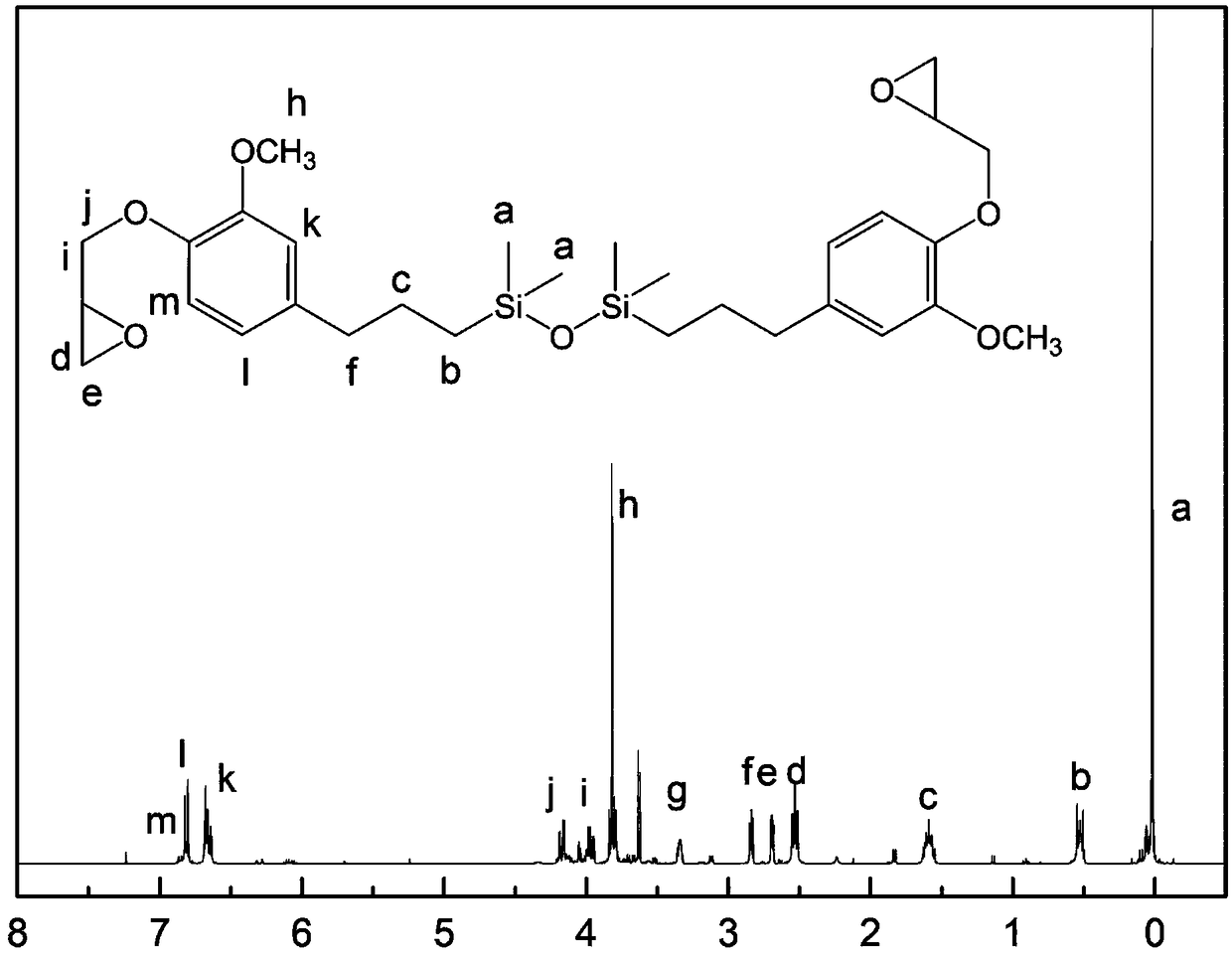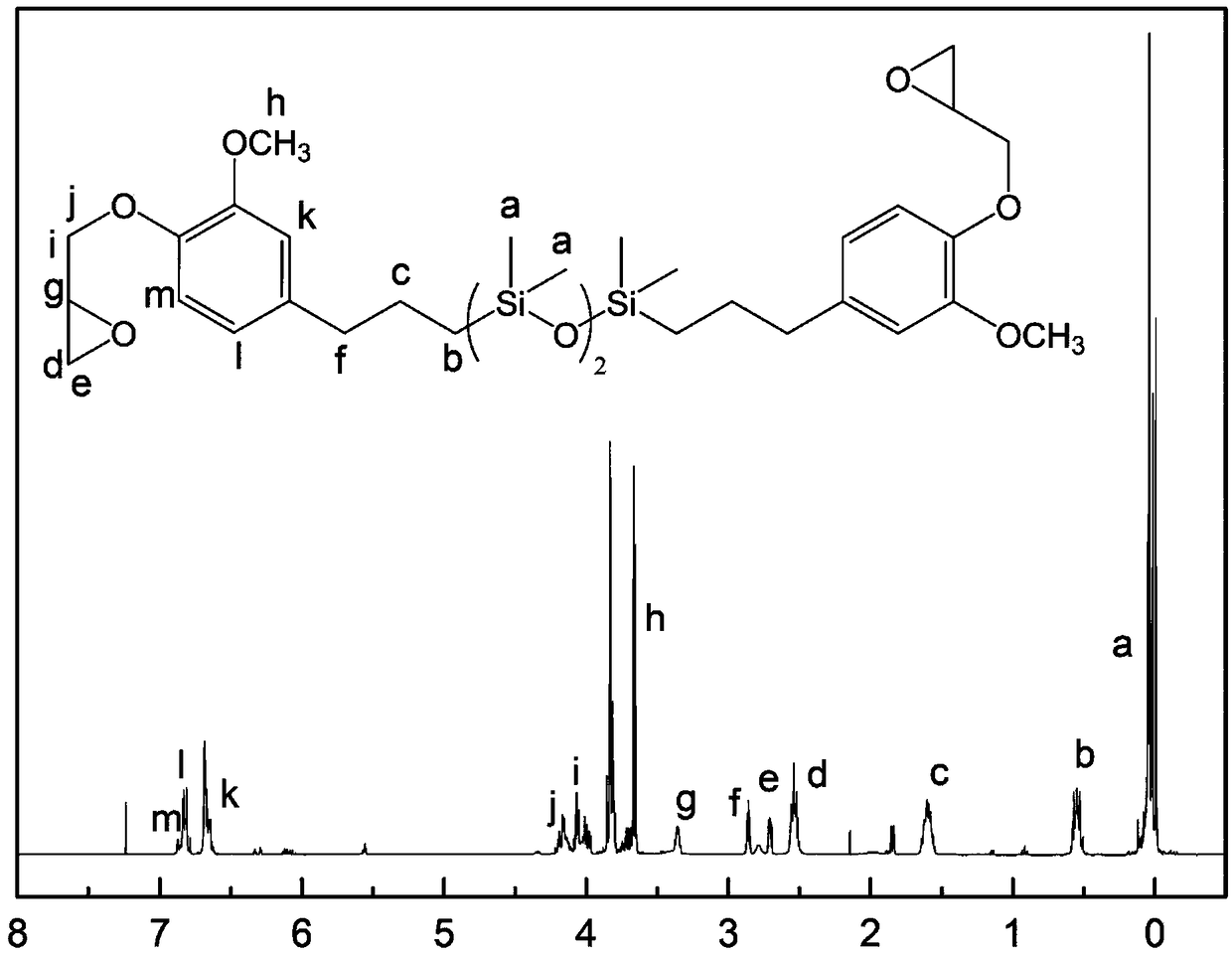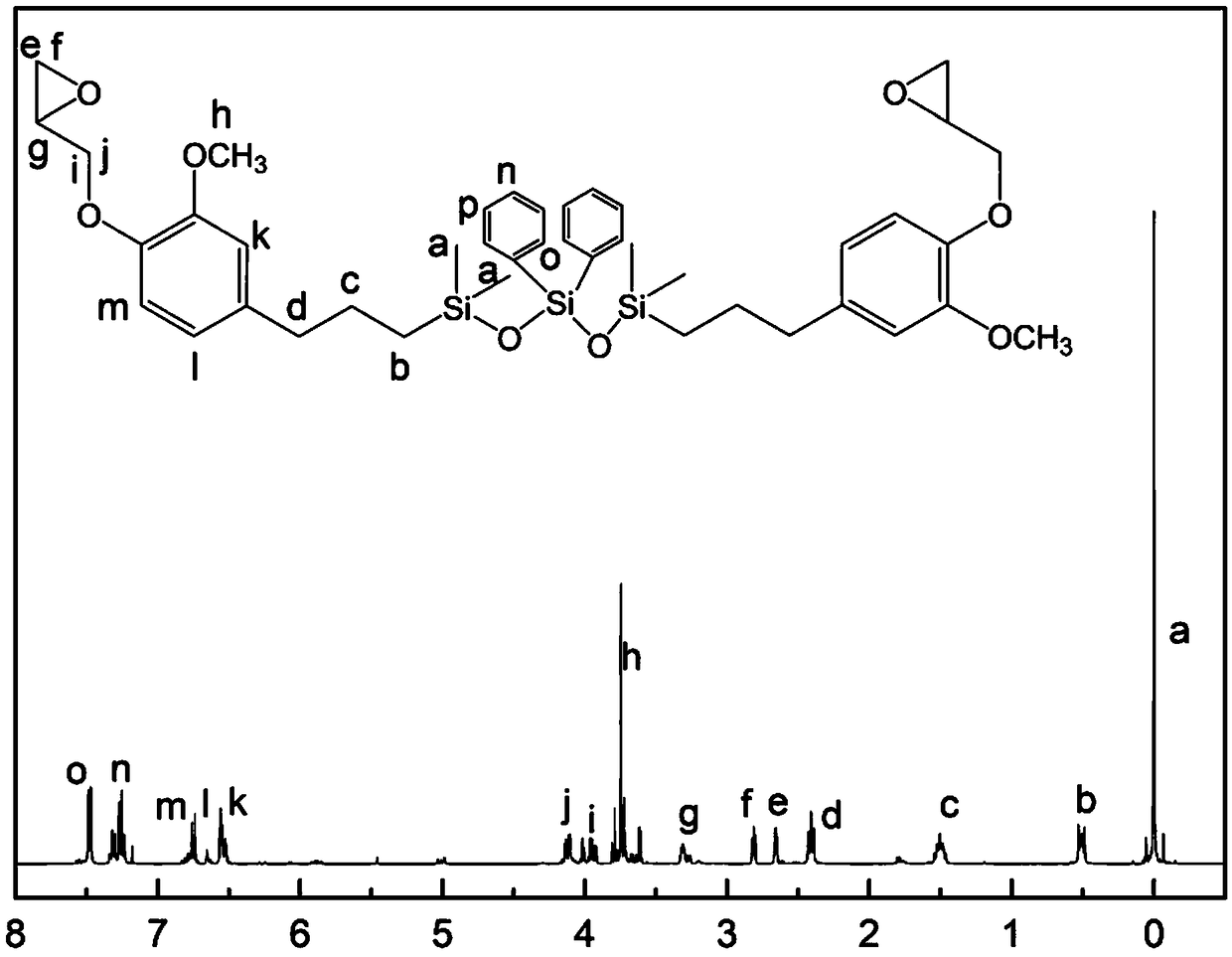Eugenol-based epoxy resin and preparation process and application thereof
A eugenol-based epoxy resin and preparation technology, applied in the field of epoxy resin, can solve problems such as difficult to meet high-quality application requirements, low yield of closed-loop products, high hydrolyzable chlorine content, etc., achieve excellent catalytic performance, improve Processing fluidity, effect of improving dielectric properties
- Summary
- Abstract
- Description
- Claims
- Application Information
AI Technical Summary
Problems solved by technology
Method used
Image
Examples
Embodiment 1
[0067] Benzyltriethylammonium chloride aqueous solution (concentration: 20g / L, 100mL) was mixed with halloysite nanotubes (5g), and the water was removed by evaporation, and the remaining substance was heated in an ultrasonic microwave device at 120°C for 20min. The halloysite nanotube catalyst immobilized with benzyltriethylammonium chloride is obtained.
[0068] Under normal pressure, eugenol and epichlorohydrin (molar ratio 1:1) were added, and the halloysite nanotubes immobilized with benzyltriethylammonium chloride prepared in this example were added in proportion as catalyst (benzyltriethylammonium chloride). The molar ratio of ethylammonium chloride to eugenol=0.05:1), etherification ring-opening reaction was carried out at 100°C, and the reaction time was 2 hours to obtain chlorohydrin ether; when the system was cooled to about 60°C, add Sodium hydroxide (the molar ratio of sodium hydroxide to eugenol = 1.05:1), was added in batches within 3 hours, and the heat preserv...
Embodiment 2
[0074] Get the eugenol-based epoxy resin 100phr prepared in Example 1, isophorone diamine 13phr, 2-methyl-4-ethylimidazole 0.3phr, stir for 2 hours and mix uniformly, according to GB-T7124-1986 (adhesive pull Tensile shear strength test method) evenly spread on the surface of the steel sheet cleaned with acetone and fixed, cured at 80°C for 30 minutes, and cured at 150°C for 1.5 hours. The iron sheet bonding strength and iron sheet bonding modulus data of the obtained samples are listed in Table 1 below.
[0075] Stir the eugenol-based epoxy resin, curing agent, and curing accelerator according to the above raw material composition, and then cast it into a steel mold, vacuumize and defoam at 80°C for half a minute, cure at 80°C for 2 hours, and cure at 150°C 2 hours. The sample released from the mold has no bubbles, and the appearance is transparent without obvious defects. The limiting oxygen index and dielectric constant data of the obtained samples are listed in Table 1 b...
Embodiment 3
[0077] Benzyltriethylammonium chloride aqueous solution (concentration: 1000g / L, 50mL) was mixed with halloysite nanotubes (10g), and the water was removed by evaporation, and the remaining substance was heated in an ultrasonic microwave device at 150°C for 40min. The halloysite nanotube catalyst immobilized with benzyltriethylammonium chloride is obtained.
[0078] Under normal pressure, eugenol and epichlorohydrin (molar ratio 1:1) were added, and the halloysite nanotubes immobilized with benzyltriethylammonium chloride prepared in this example were added in proportion as a catalyst (benzyltriethylammonium chloride). The molar ratio of triethylammonium chloride to eugenol=0.05:1), etherification ring-opening reaction was carried out at 110°C, and the reaction time was 2 hours to obtain chlorohydrin ether; Add sodium hydroxide (the molar ratio of sodium hydroxide to eugenol = 1.05:1), add in batches within 3 hours, and keep warm for 4 hours; put the system to stand, cool and ...
PUM
 Login to View More
Login to View More Abstract
Description
Claims
Application Information
 Login to View More
Login to View More - R&D
- Intellectual Property
- Life Sciences
- Materials
- Tech Scout
- Unparalleled Data Quality
- Higher Quality Content
- 60% Fewer Hallucinations
Browse by: Latest US Patents, China's latest patents, Technical Efficacy Thesaurus, Application Domain, Technology Topic, Popular Technical Reports.
© 2025 PatSnap. All rights reserved.Legal|Privacy policy|Modern Slavery Act Transparency Statement|Sitemap|About US| Contact US: help@patsnap.com



